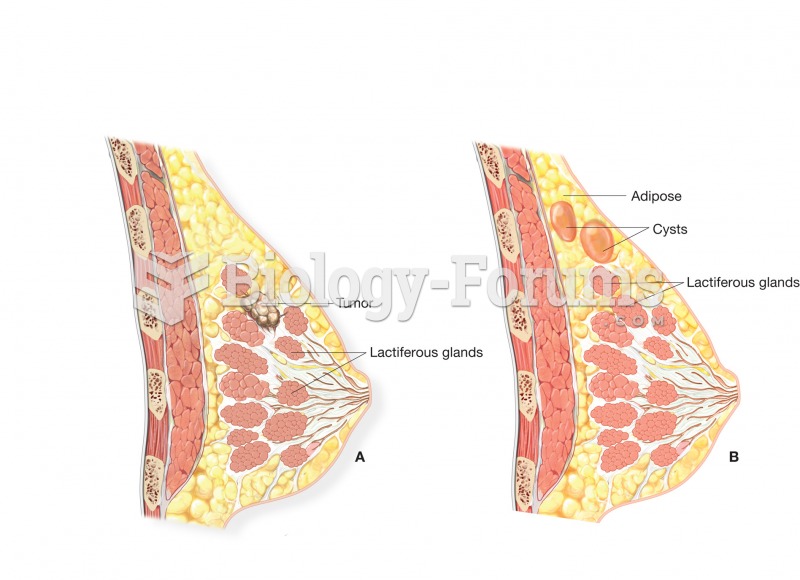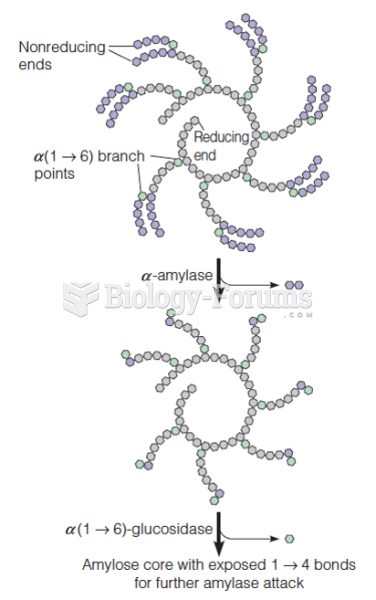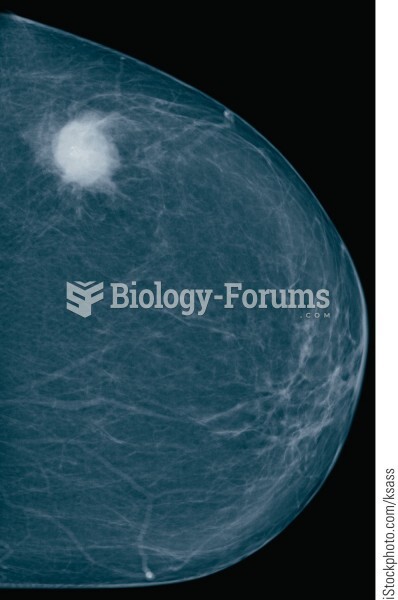Answer to Question 1
The links between dietary fats and cancer are not as evident as they are for heart disease. Dietary fat does not seem to initiate cancer development but, instead, may promote cancer once it has arisen. Stronger risk factors for cancer include smoking, alcohol, and environmental contaminants.
The relationship between dietary fat and the risk of cancer differs for various types of cancers. In the case of breast cancer, evidence has been weak and inconclusive. Some studies indicate an association between dietary fat and breast cancer; more convincing evidence indicates that body fatness contributes to the risk. In the case of colon cancer, limited evidence suggests a harmful association with foods containing animal fats.
The relationship between dietary fat and the risk of cancer differs for various types and combinations of fats as well. The increased risk in cancer from fat appears to be due primarily to saturated fats or dietary fat from meats (which is mostly saturated). Fat from milk or fish has not been implicated in cancer risk. Olive oil seems to have a protective effect.
Answer to Question 2
First and foremost, triglycerideseither from food or from the body's fat storesprovide the cells with energy. When a person dances all night, her dinner's triglycerides provide some of the fuel that keeps her moving. When a person loses his appetite, his stored triglycerides fuel much of his body's work until he can eat again.
Linoleic acid is an essential fatty acid and the primary member of the omega-6 fatty acid family. When the body receives linoleic acid from the diet, it can make other members of the omega-6 familysuch as the 20-carbon polyunsaturated fatty acid, arachidonic acid. Should a linoleic acid deficiency develop, arachidonic acid, and all other omega-6 fatty acids that derive from linoleic acid, would also become essential and have to be obtained from the diet. A nonessential nutrient (such as arachidonic acid) that must be supplied by the diet in special circumstances (as in a linoleic acid deficiency) is considered a conditionally essential nutrient. Normally, vegetable oils and meats supply enough omega-6 fatty acids to meet the body's needs.
Linolenic acid is an essential fatty acid and the primary member of the omega-3 fatty acid family. Like linoleic acid, linolenic acid cannot be made in the body and must be supplied by foods. Given the 18-carbon linolenic acid, the body can make small amounts of the 20- and 22-carbon members of the omega-3 family, eicosapentaenoic acid (EPA) and docosahexaenoic acid (DHA), respectively. These omega-3 fatty acids play critical roles in the optimal structure and function of cells. Found abundantly in the eyes and brain, the omega-3 fatty acids are essential for normal growth, visual acuity, and cognitive development. They may also play an important role in the prevention and treatment of heart disease.
The body uses the longer omega-3 and omega-6 fatty acids to make substances known as eicosanoids. Eicosanoids are a diverse group of more than 100 compounds. Sometimes described as hormonelike, eicosanoids differ from hormones in important ways. For one, hormones are secreted in one location and travel to affect cells all over the body, whereas eicosanoids appear to affect only the cells in which they are made or nearby cells in the same localized environment. For another, hormones elicit the same response from all their tar- get cells, whereas eicosanoids often have different effects on different cells.







